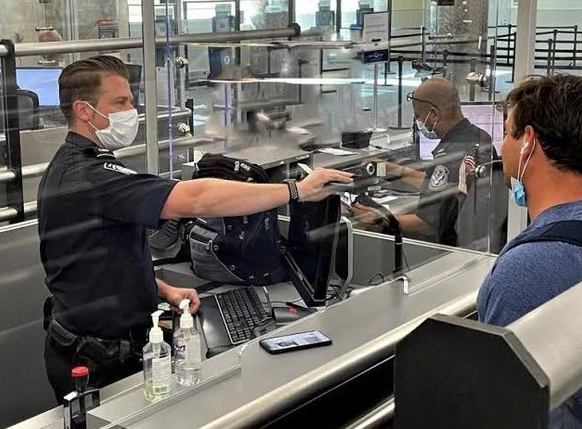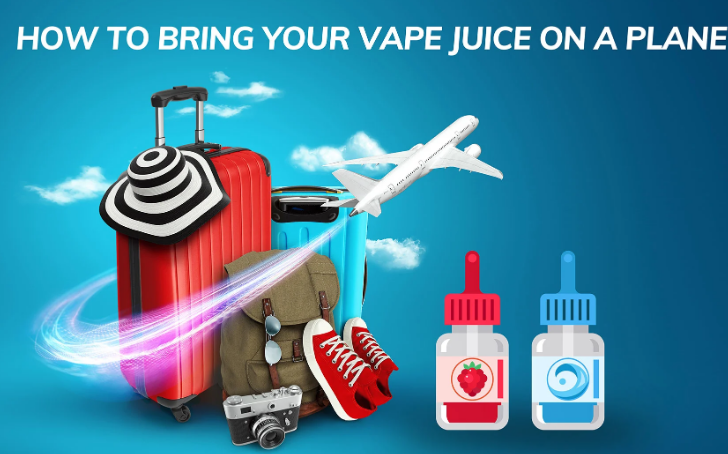Yes, you can take vape liquid through customs; limit to 100ml per container, within a clear 1-liter bag for carry-on.
General Guidelines for Carrying Vape Liquid
Traveling with vape liquid requires awareness of specific guidelines to ensure a smooth journey. These regulations focus on limiting quantities and enforcing packaging standards to enhance safety and compliance.
Quantity Restrictions
Airlines and customs authorities typically limit the amount of vape liquid passengers can carry. Passengers are allowed to carry up to 100 milliliters (ml) of vape liquid per container. The total volume of all liquids, including vape liquids, must not exceed 1 liter when packed in a clear, resealable plastic bag. This standard aligns with the restrictions for carrying liquids in carry-on luggage, promoting safety and convenience.
Comparing these limits with those for other liquids, the rationale becomes clear: smaller quantities reduce the risk of spills and misuse. While a traveler can bring several 100ml containers of shampoo or lotion, the same principle applies to vape liquid to maintain a manageable and safe volume.
Packaging Requirements
Packaging standards for vape liquids are strict to prevent leaks and spills during transit. Each container must be securely sealed and placed within a transparent, resealable plastic bag. This bag serves a dual purpose: it contains any potential leaks and allows security personnel to inspect the liquids easily without opening the individual containers.
The emphasis on sealed packaging is significant compared to other items, such as electronics or clothing, where the concern for leaks is non-existent. Vape liquid containers made of durable materials like plastic or glass are recommended to withstand pressure changes during flights, showcasing the importance of selecting the right packaging to avoid damage or loss.
To ensure compliance with these guidelines, passengers should check the latest regulations from their airline and destination country. Restrictions may vary, and being informed can prevent any inconvenience during travel. Wikipedia provides additional context on electronic cigarettes and liquids, underscoring the relevance of understanding specific travel regulations related to vape products.

Airport Security and Vape Liquid
Traveling with vape liquid involves specific considerations at airport security checkpoints to ensure compliance with regulations and smooth passage.
Navigating through Security Checks
Travelers must present their vape liquid containers separately when passing through airport security. This requirement aligns with procedures for other liquids, gels, and aerosols, which also must be presented outside of carry-on bags in a clear, resealable plastic bag for screening. The total limit of liquids, including vape juice, should not exceed 1 liter, with each container holding no more than 100ml.
The critical difference in screening vape liquids as opposed to other items like laptops or shoes lies in the liquid’s potential to obstruct clear X-ray images. Security personnel need to visually inspect these liquids to verify they are not hazardous, underscoring the need for travelers to pack them in an easily accessible manner.
Declaration of Vape Liquids at Security
Declaring vape liquids at airport security is mandatory. Upon reaching the security checkpoint, travelers should remove their vape liquids from their carry-on luggage and place them in the provided bins for inspection. This process mirrors the protocol for other potentially sensitive items, such as prescription medications or baby food, which also require declaration for a thorough check.
The emphasis on declaration ensures all liquids are screened properly, reducing the risk of security breaches. This protocol demonstrates the balance between security concerns and the practicality of traveling with personal items like vape liquids. For travelers unsure about the specifics of declaring vape liquids, consulting the Transportation Security Administration (TSA) guidelines or their airline’s policies provides clarity and helps avoid delays or confiscation of items at the checkpoint.
Understanding these procedures and preparing vape liquids for inspection can significantly expedite the security screening process, allowing travelers to proceed to their gates with minimal disruption.
Customs Regulations on Vape Liquid by Region
Traveling with vape liquid involves navigating through various customs regulations that vary by region. Understanding these differences is crucial for travelers to ensure compliance and avoid penalties.
| Region | Quantity Limits | Nicotine Content | Declaration Required |
|---|---|---|---|
| North America | Up to 100ml per container; no more than 1 liter total | Varies by country; the USA allows, Canada has restrictions | Yes, especially if above personal use amounts |
| Europe | Up to 100ml per container; no more than 1 liter total | Regulated by TPD; max 20mg/ml in EU countries | Yes, and subject to duty if above allowance |
| Asia | Highly variable; some countries have strict bans | Regulations vary widely; some countries prohibit nicotine | Yes, declaration is often more scrutinized |
| Australia and New Zealand | Up to 100ml per container; Australian personal import scheme applies | Australia requires a prescription for nicotine; New Zealand allows up to 20mg/ml | Yes, with specific attention to nicotine content |
North America
In North America, the United States and Canada have distinct regulations. The United States is relatively lenient, allowing travelers to carry vape liquids in their carry-on luggage with the standard liquid limits. Canada, while also adhering to the 100ml per container rule, imposes stricter regulations on nicotine-containing products, often requiring additional declarations and possibly subjecting them to duties if they exceed amounts considered for personal use.
Europe
European regulations are largely harmonized through the Tobacco Products Directive (TPD), which sets a maximum nicotine concentration of 20mg/ml for vape liquids. Travelers within the European Union can carry up to 100ml per container, not exceeding a total of 1 liter, in their carry-on bags. Declaration at customs is required if carrying quantities that might be considered above the allowance for personal use, potentially subjecting them to duties.
Asia
Customs regulations in Asia vary significantly across countries, with some, like Thailand and Singapore, imposing strict bans on e-cigarettes and vape liquids. In countries where vaping is allowed, regulations regarding quantity and nicotine content can be markedly different. Travelers must declare their vape liquids and be prepared for potentially stringent scrutiny, especially regarding nicotine content.
Australia and New Zealand
Both Australia and New Zealand have specific regulations concerning vape liquids. In Australia, nicotine vape liquids are controlled substances and require a prescription for legal possession. The personal importation scheme allows Australians to import a three-month supply of nicotine vape liquid, but it must be declared at customs. New Zealand, more lenient, permits vape liquids with up to 20mg/ml of nicotine. Travelers must declare these liquids, and compliance with the personal use quantity limits is strictly monitored.

Special Considerations
When traveling with vape liquid, there are additional factors to consider, especially when the liquids contain nicotine or are flavored. These factors can influence the ease with which you can pass through customs and security checks in various countries.
Traveling with Nicotine-Containing Vape Liquid
Nicotine-containing vape liquids are subject to stricter regulations due to their potential health implications and addictive nature. Travelers should verify the nicotine concentration of their vape liquid, as some countries impose limits on the permissible strength. For example, the European Union restricts nicotine strength to a maximum of 20mg/ml for e-liquids sold within its member states.
Comparing this regulation to countries without specific nicotine limits highlights the importance of understanding and adhering to local laws to avoid confiscation or penalties. It is crucial to research the destination country’s regulations on nicotine products before traveling. Information can typically be found on governmental health websites or through Wikipedia pages discussing global vaping laws.
Flavored Vape Liquids and Potential Restrictions
Flavored vape liquids can also face restrictions, as some regions have banned certain flavors to reduce the appeal of vaping to young people. For instance, the United States has specific restrictions on the sale of pre-filled flavored vape cartridges, except for tobacco and menthol flavors, to combat youth vaping.
Travelers should be aware of the flavors they carry and check if their destination has any bans or restrictions on vape liquid flavors. The contrast between regions with flavor bans and those without underscores the variability in health policy approaches to vaping. Ensuring compliance with these flavor restrictions can prevent complications during travel, such as the confiscation of non-compliant products at customs.
Being informed about the specific regulations regarding nicotine content and flavor restrictions in vape liquids can significantly impact the smoothness of your travel experience. Always prepare in advance by researching your destination’s policies on vaping and adjust your travel pack accordingly to ensure a hassle-free journey.